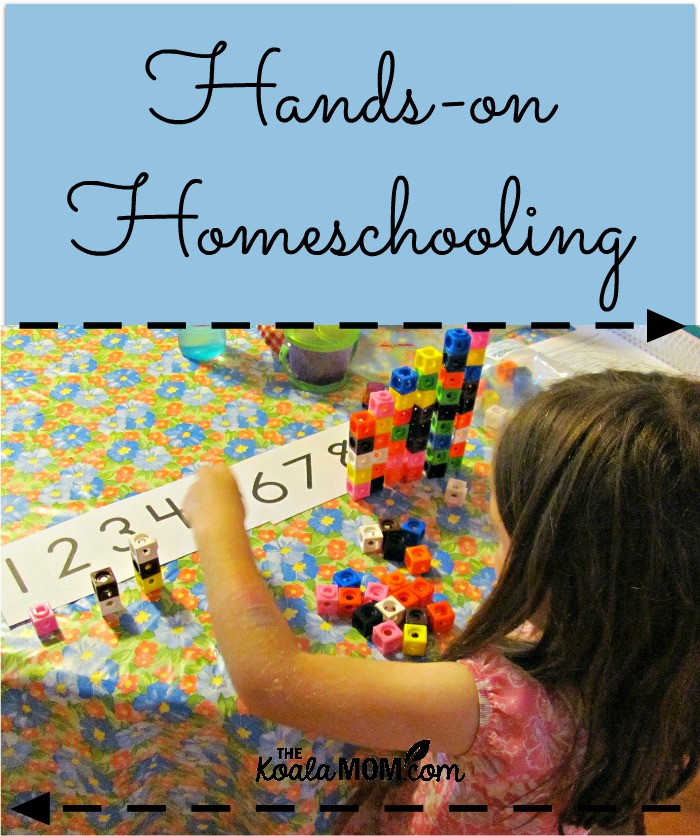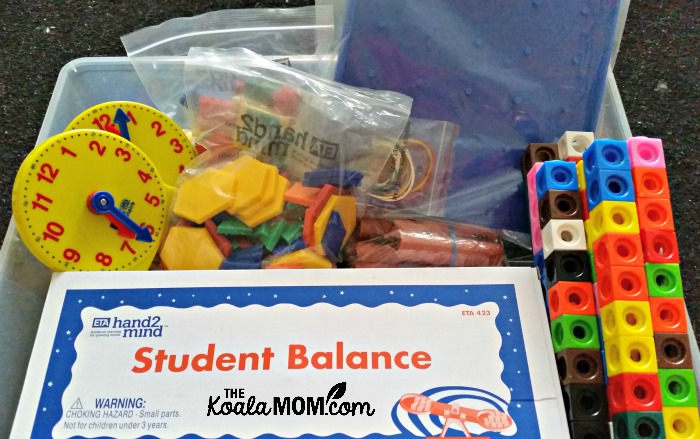One thing I’ve noticed with both Sunshine and Lily is that they love hands-on homeschooling. While they usually enjoy learning, they get really excited when I mention “craft” or “experiment” or get out various manipulatives to use in math lessons. I’m thankful that most of our curriculum have quite a few hands-on ideas built in, but I’ve also started watching for more ways to make their learning more tactile. Here’s a few things that they’ve had fun with.

Ashley from Life with Moore Babies explains seven ways hands-on learning benefits kids. It is more enjoyable, more engaging for the child, benefits multiple learning styles, improves memory, and more.
History
This is currently the girls’ favourite subject, because the Connecting with History program is based heavily upon good literature. Who doesn’t want to sit on the couch reading a book full of pictures? Two of the girls’ favourite books take their study of history further by using crafts to bring the past alive.
Famous Figures of Ancient Times includes 20 paper figures of various historical figures, from ancient pharaohs to Biblical greats like Moses and David to early philosophers. Each figure comes in two versions: one in full-colour, the other as a line-drawing that the girls can colour if they want. They cut out the figures and use brads to fasten their parts together. Then they can move their figures about as they wish or rearrange their poses. We currently have five figures marching across our wall and the girls like changing their arms and legs and talking about what they’re each doing.
Old Testament Days walks through the Old Testament and talks about various stories, with specific details about what life was like in those times. Nearly every second page has a craft or recipe idea to help kids better picture what happened in Noah’s day or while the Israelites were wandering the desert.
Science
Christian Kids Explore Earth and Space has at least one hands-on activity per chapter. So far, we’ve had fun building a barometer, making a volcano and trying to grow a stalactite. Some of the activities in this textbook are a bit too complicated for the girls, so I’ve supplemented our studies with books from the library.
When the girls spent a year doing oceanology, they created a plasticine diorama of the animals they studied. By the end of the year, they had a box full of cute ocean animals, and they could share all sorts of facts about each animal they’d modeled. Students could also use play dough or salt dough to create dioramas and landscapes for other areas of science.
Last year, we also took field trips to places like a local farm and the zoo to talk about things we’d studied in science. Or I went on nature walks with the girls, pointing out the way our neighbourhood changed with each season.
Math
When I bought our Grade 1 Saxon math curriculum, I also bought the recommended kit of hands-on toys. It cost nearly as much as the curriculum, but can be used for Kindergarten through Grade 3. And we’ve gotten plenty of use out of it. It includes items like movable clocks, a balance, geoboards, linking cubs, pattern blocks, etc. I like the hands-on aspect of the Saxon curriculum; the girls’ attitude about doing math always changes when they see me getting out the “toys” or an apple or anything else.
I’d also suggest getting rolls of coins for doing math. Our neighbour gave us several rolls of pennies last year and we’ve used them many times over. Saxon implements pennies, dimes and nickels into lessons to teach counting by fives and tens and to introduce the idea of adding two-digit numbers (among other things).
Other friends of mine have used dominoes and dice to teach counting and addition. And simple card games can also be a great way to get kids excited about numbers (especially if they are social like Sunshine and like the interactive element of the game).
Reading
Even reading can be a hands-on activity. For example, I used lots of crafts with the girls in preschool to teach them their letters and sounds. Now that they are working on learning to read, we’ve used sight-word games that encourage them to recognize words at a glance. I also get them to do some writing every day; last year we used handwriting and spelling books that went with our phonics curriculum and this year I’m simply using Bonnie Landry’s dictation method.
That’s what hands-on homeschooling looks like around here. Have you noticed that your kids have certain learning styles or preferences? How do you make learning more hands-on for them?
I’m linking up with the Canadian Homeschooling Bloggers for this post. Drop by there for more ideas about hands-on learning at home!
This post contains affiliate links; as an Amazon Associate, I earn from qualifying purchases.




One Response
My kids would love those figures for ancient times! Whenever we are studying a period of history or historical figure, they always want to know if I have paper dolls to go along with it 🙂